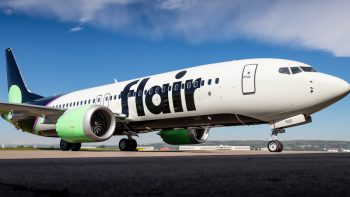
Canadian tourism is setting an ambitious goal to move up the tourism ladder. Whether it can be achieved is something nobody will know for several years.
Destination Canada recently launched its new tourism strategy, ‘A World of Opportunity, ‘ which focuses on transforming the Canadian tourism sector and catapulting Canada back into the top seven global destinations by 2030.
Destination Canada President and CEO Marsha Walden and Soraya Martinez Ferrada, Minister of Tourism, officially presented the tourism roadmap designed to increase Canada’s global competitiveness and bring in up to $160 billion in annual revenue by 2030, “transcending the traditional constraints that currently cap the tourism industry’s potential at $140 billion.”
Canada’s global competitiveness has continued to slip since 2009. The World Economic Forum’s Travel and Tourism Development Index recently ranked Canada as 13th – a drop of three places and marking the first time Canada has fallen out of the top ten. Canada was ranked ninth in 2019.
One of the keys to success will be attracting more visitors during the cooler shoulder seasons. Tourism reps also want people to stay longer and to attract more locals, foreign visitors and business people to a wider range of Canadian destinations.
“We would love to retain our workforce longer into the season,” Walden told the Canadian Press. “And normally the product doesn’t need to be hugely adapted to take in a new season like fall and approaching into winter.
“We really need to lean heavily on expanding further into the shoulders.”
Building out attractions into year-round vacation spots is also an option, with resorts from Quebec’s Mont Tremblant to Ontario’s Blue Mountain showcasing how summer activities can lure visitors beyond the traditional ski crowd.
The report also seven “levers for improved competitiveness.” That list includes an increased labour supply, “investing in Canada’s global brand,” and streamlining border processes.
The final lever is a little odd: “Deepen Canadians’ pride in their home and love for hosting visitors. Share expert advice and insights that create a policy environment where tourism thrives.”
How on earth would that happen? Do you run commercials pleading with Canadians to be proud of our country and be nice to visitors?
“This lever emphasizes the importance of fostering a deeper connection and pride among Canadians for our country,” Beth Potter, president and CEO of the Tourism Industry Association of Canada, told Open Jaw. “By doing so, we can enhance the experience of hosting visitors. Our aim is to inspire Canadians to share their love for our diverse landscapes, cultures, and communities. It is also aimed at helping Canadians, and politicians, understand the value, both economic and social, that tourism brings to communities.
“To lead this effort, Destination Canada has launched an advisory committee on public and policy support. Nik Nanos chairs this committee, and I serve as vice chair. TIAC is exploring tactics to change Canadians’ perception of the value of tourism for the better. This includes sharing expert advice and insights to create a policy environment where tourism thrives. TIAC, along with the Provincial and Territorial Tourism Industry Associations (PTTIA), will play a crucial role in this initiative. Our collective efforts will focus on investing in infrastructure, marketing, and training programs to equip hosts with the tools they need to offer.”
The report also said that transformative growth for the tourism sector will be achieved through four strategic drivers, each backed by coordinated initiatives and actions. Those are:
- Sector Advancement | A Competitive Canada
- Brand Leadership | Driving the Brand
- Destination Development | Propelling Investment and Supply
- Collective Intelligence | Leading with Data
“Canada is a tourism superpower – because we have what the world wants,” said Ferrada.
“Destination Canada’s ‘A World of Opportunity’ strategy will help our tourism sector reach its full potential, bringing more visitors to our country and creating jobs & opportunities in communities nationwide,” Ferrada said. “It also aligns perfectly with our Federal Tourism Growth Strategy. In a world where nations are investing in tourism, we’re ensuring that Canada can compete with the best.”






